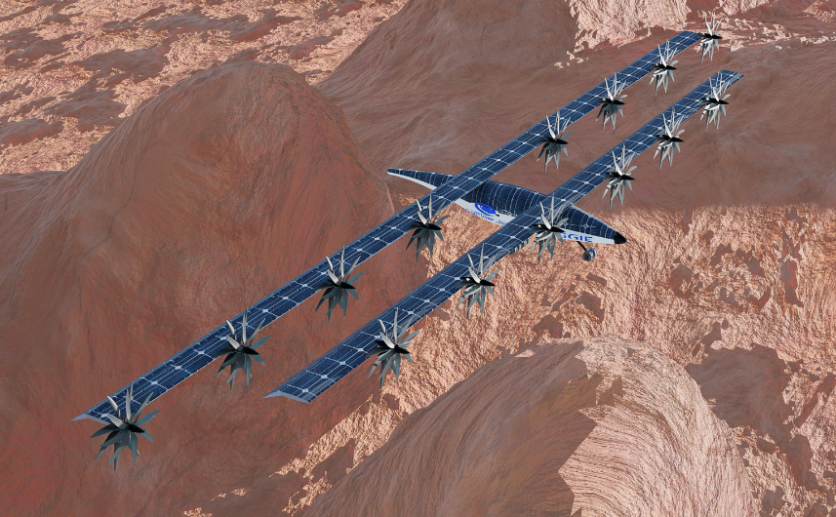In an effort to discover sources of water on Mars, a cutting-edge aircraft nicknamed MAGGIE (Mars Aerial and Ground Intelligent Explorer) could soon soar 3,300 feet above the Martian surface in search of water and unlock the Red Planet's secrets (via Space.com).

MAGGIE's Ambitious Mission
MAGGIE, a solar-powered marvel, recently secured its initial funding from NASA's Innovative Advanced Concepts (NIAC) program, propelling it into the early stages of development.
The aircraft, equipped with advanced deflected slipstream technology known as CoFlow Jet (CFJ), is designed for vertical take-off and landing, promising a revolutionary exploration platform for Mars.
According to the technical brief, MAGGIE boasts an impressive range, capable of covering 111 miles on a single charge and cruising a staggering 10,000 miles during a Martian year-equivalent to approximately 24 months on Earth.
Its mission? To conduct three vital investigations: the hunt for water, a study of the Martian magnetic field, and the search for elusive methane signals, which could potentially signify signs of life.
Challenges and Feasibility
Despite its promising potential, MAGGIE is in the early stages of development, and its principal investigator, Ge-Cheng Zha of Coflow Jet, LLC, acknowledges the need for further study under Martian atmospheric conditions.
Zha notes the feasibility of the concept but emphasizes the importance of validation to ensure the aircraft's success in the challenging Martian environment, where atmospheric conditions are less than 1% of Earth's at sea level.
The Phase 1 funding from NIAC provides a lifeline for MAGGIE, allowing researchers to continue refining and validating the technology. If successful, MAGGIE could mark a giant leap in NASA's exploration of Mars, providing a unique perspective by exploring the Martian surface from the air.
Read Also : NASA's James Webb Space Telescope Discovers Signs of Possible Aurorae in Extremely Cold Brown Dwarf
Ingenuity's Legacy and Inspiration
Space.com tells us that the success of the Ingenuity helicopter on Mars, originally designed for a mere five flights but now surpassing 70 liftoffs, serves as an inspiration for MAGGIE.
Ingenuity, a testament to the power of NASA's Innovative Advanced Concepts program, showcases the potential of pushing the boundaries of exploration technology.
Ingenuity is currently aiding its rover partner, Perseverance, in the quest for ancient water and signs of life on Mars. MAGGIE aims to follow Ingenuity's flight steps and contribute to ongoing scientific discoveries on the Red Planet.
Future Prospects
Ge-Cheng Zha envisions MAGGIE as a vehicle that could capture the public imagination due to its audacity and ability to explore diverse Martian environments.
If successful, MAGGIE would revolutionize our understanding of Mars and engage the public in the excitement of planetary exploration.
While Phase 1 funding does not guarantee a future flight date, MAGGIE represents a promising stride in Mars exploration. As NASA grapples with ongoing funding challenges, other Mars flyers, including potential helicopter fetchers for the Mars sample return mission in the 2030s, could further enhance our ability to unlock the secrets hidden within the Martian terrain.
Stay posted here at Tech Times.
Related Article : NASA Curiosity Rover: Watch a Martian Day's Timelapse and See What its Like on the Next-Door Planet

ⓒ 2025 TECHTIMES.com All rights reserved. Do not reproduce without permission.




